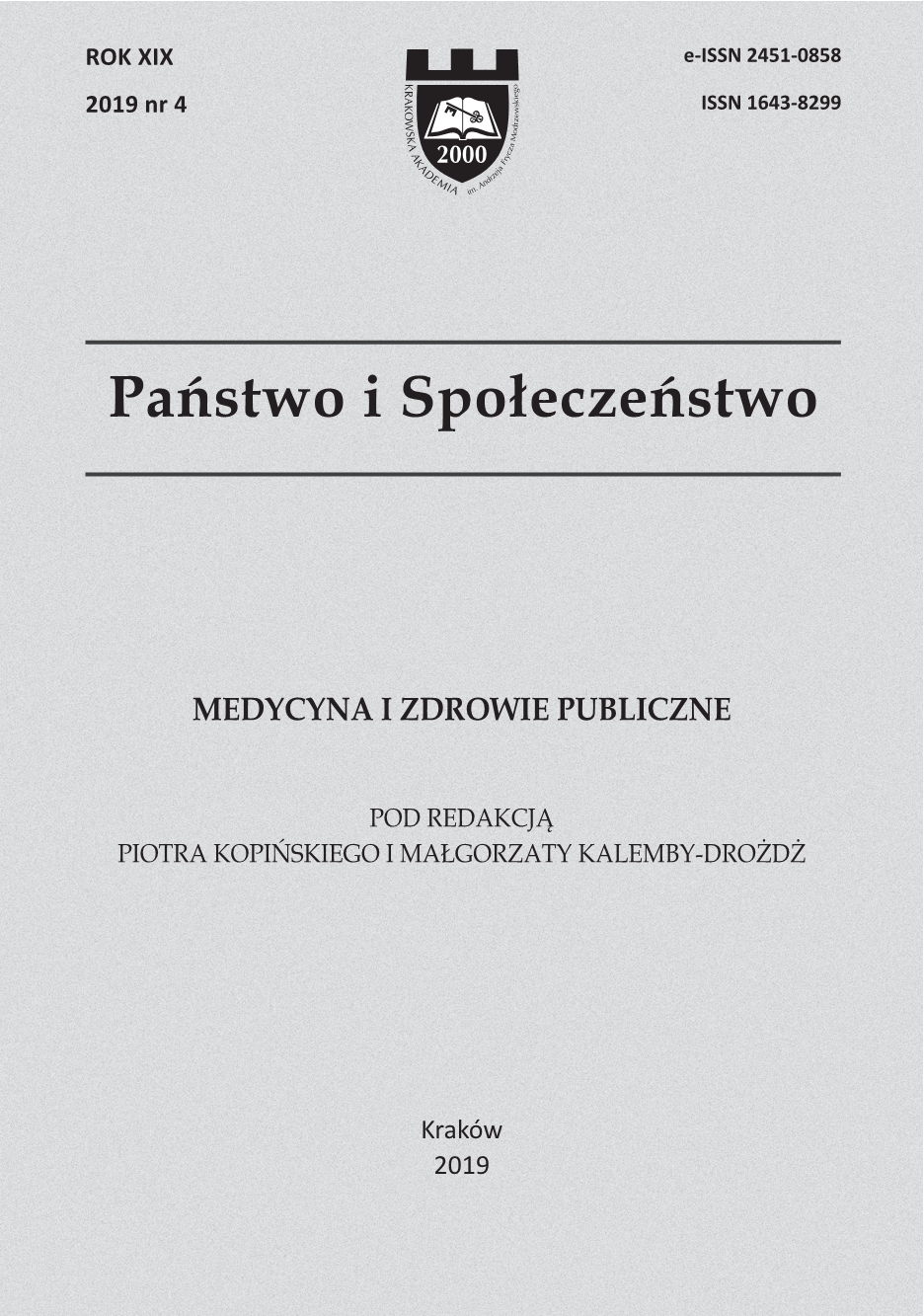Analiza poziomu wybranych parametrów stanu zapalnego, krążących kompleksów immunologicznych oraz związanych z nimi wskaźników (neutrofil/limfocyt, płytki/limfocyt, CRP/KKI) w raku płuc
Analysis of the concentration of selected parameters of inflammation, circulating immune complexes and related indicators (neutrophil/ lymphocyte, platelet/lymphocyte, CRP/CIC) in patients with lung cancer
Author(s): Marta Pilaczyńska-Cemel, Ryszard Gołda, Anita Dąbrowska, Grzegorz PrzybylskiSubject(s): Methodology and research technology, Evaluation research, Health and medicine and law
Published by: Oficyna Wydawnicza KA AFM
Keywords: circulating immune complexes; neutrophil-lymphocyte ratio; platelet-lym-phocyte ratio; lung cancer;
Summary/Abstract: Introduction: Lung cancer is the most frequent malignancy in Poland and is the first cause of death in oncology. The aim of the study is to analyze selected parameters of inflammation in lung cancer. Material and methods: 48 patients with lung cancer were included in the study group and 30 persons in the control group. The group was divided according to the level of severity - 19 with low/moderate stage (I-IIIA), 29 with high (IIIB and IV) and to histopatho- logical type - 9 with small cell carcinomas, 39 with non-small cell carcinomas (therein 18 - adenocarcinomas and 21 squamous carcinomas). The concentrations of circulating immune complexes (CIC), C-reactive protein (CRP), neutrophils, lymphocytes and their associated indicators were examined: CRP/CIC, NLR (neutrophil/lymphocyte ratio), PLR (platelet/lymphocyte ratio). Results: The average parameter values were significantly higher among people with lung cancer. The median value of CIC was significantly higher in the group with advanced cancer (0.30 vs 0.23, p<0.01 compare to stage I-IIIA). The median PLR and platelet counts among patients with squamous cell carcinoma were significantly higher compared to adenocarcinomas (215 vs 138.5, p = 0.037, 388.0 thousand/ul vs 277.5 thousand/ul, p = 0.034). Conclusion: Based on the results of our work, we suggested the dominance of a specific humoral response in the more advanced stage of lung cancerogenesis. The process of carcinogenesis is associated with various activities of neutrophils and lymphocytes.
Journal: Państwo i Społeczeństwo
- Issue Year: XIX/2019
- Issue No: 4
- Page Range: 9-25
- Page Count: 17
- Language: Polish

